Division

Division is used when sharing a number into another number. Division is the opposite of multiplying.
There are many methods that you can use to help you divide. Let’s take a look at some.

Watch: Arrays
First, watch this video which explains how to use an array to show that 27 ÷ 3 = 9.
Balloons! I love balloons!
Don't worry, you can share them out equally by dividing the number of balloons by the number of you!
We could use an array. There are 4 of you…3 of you…and 27 balloons.
If you divide them in to 3 groups, and then count how many balloons are in each group…you get 9!
So you each get 9 balloons because 27 divided by 3 is 9.
Just like three times 9 is 27.
And that's fair and everyone's happy!

An array is a group of things arranged into rows and columns. You can use arrays to help you divide one number by another.
Arrange the total number of things you want to divide into groups of the number you want to divide by. Count the number of groups to find the answer.

Here is an array showing that 27 ÷ 3 = 9.

You can see that 27 can be arranged into 9 groups of 3. Count the red circles on one of the rows to double check.
Watch: Number lines
You can use a number line to help you divide too. Watch this clip to find out how a number line can be used to solve 30 ÷ 5.
To work out 30 ÷ 5, count how many 'jumps' of 5 it takes to get from 0 to 30.
6 'jumps' of 5 means 30 ÷ 5 = 6.
Here is how it looks on a number line:

Partitioning
Partitioning the number that you are dividing into tens and ones can make the number more manageable.
Example 1
What is 69 ÷ 3?
This place value chart shows the number 69 divided into tens and ones.
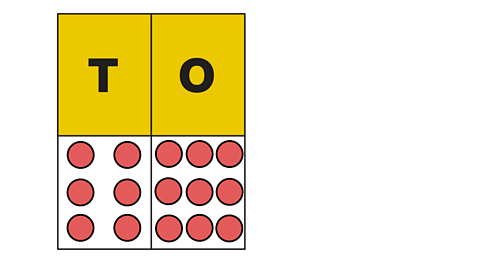
Let’s partition 69 into 60 and 9 and divide them by 3 separately.
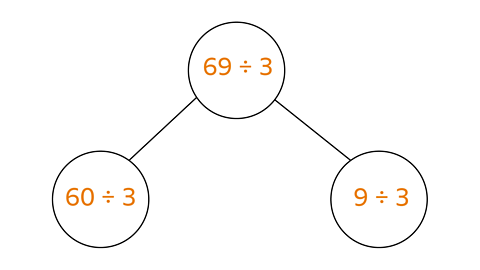
Now you can answer the two divisions separately and add the answers together.
These are the two divisions:
60 ÷ 3 = 20
9 ÷ 3 = 3
Now add the results together:
20 + 3 = 23
We have the answer:
69 ÷ 3= 23
Short division
This method is commonly called the ‘bus stop method’ because the sign looks like a bus stop!
It works in a very similar way to the partitioning method - you divide the tens first, then the ones.
Example 1
What is 84 ÷ 4?
The number you are dividing by goes outside of the ‘bus stop,’ while the larger number goes inside.
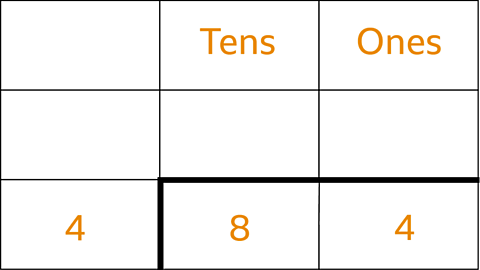
Step 1: Focus on dividing the tens.
80 ÷ 4 = 20
Since 20 is made up of 2 tens, you just put a 2 in the tens column.
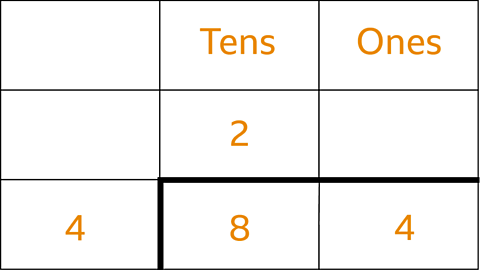
Step 2: Now move on to the ones.
4 ÷ 4 = 1
Place the 1 in the ones column where it belongs.
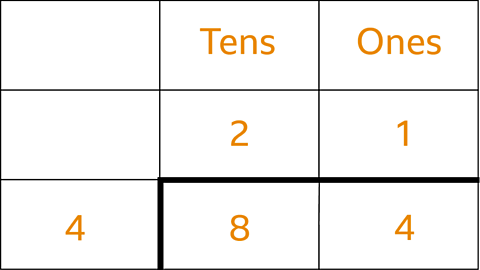
Now you have the answer:
84 ÷ 4 = 21
Activity
Quiz
Play Guardians: Defenders of Mathematica to get ready for SATs. gamePlay Guardians: Defenders of Mathematica to get ready for SATs.
In this game, use the times tables and more maths skills to defeat monsters and reclaim the Kingdom.

More on Multiplying and dividing
Find out more by working through a topic
- count23 of 34
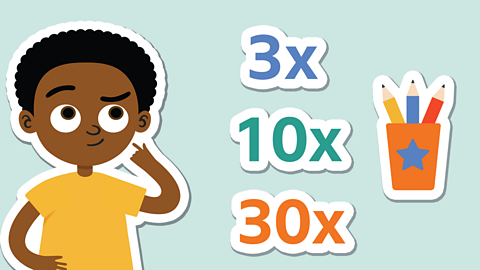
- count24 of 34
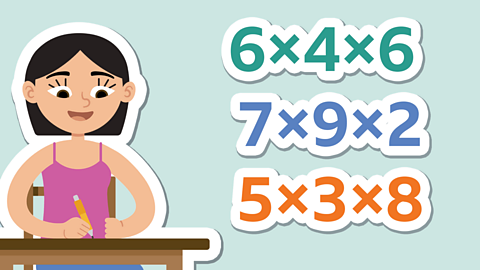
- count25 of 34
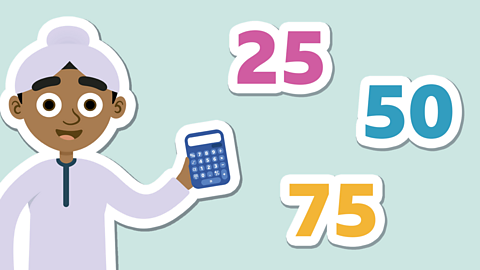
- count26 of 34
